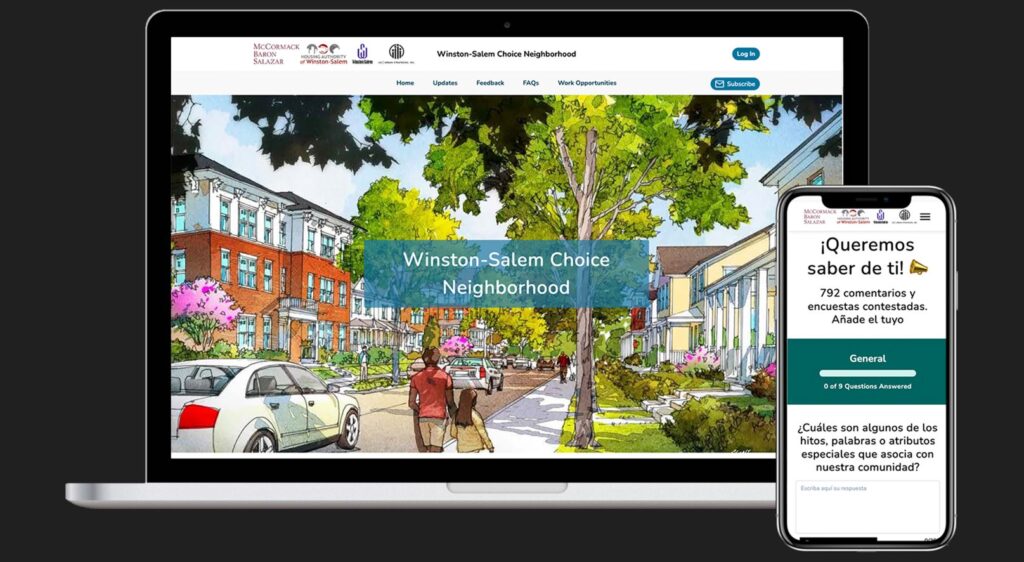Developers Tap Digital Engagement Tools to Solicit Community Feedback and Earn Support
By Pamela Martineau
5 min read
A new crop of digital community engagement tools is giving developers an avenue to bring resident voices into the planning process without requiring attendance at long public meetings. The platforms allow residents to comment on projects online, and then have their comments distilled into Artificial Intelligence (AI)-generated reports that can be submitted to decision-makers. Proponents of digital engagement platforms say they help make the commenting process more equitable by gathering input from people who might shy away from public meetings.

“Research has shown that the people who attend public meetings are typically older, wealthier and whiter than the communities they represent. They are also generally more opposed to new development,” explains Karin Brandt, founder and CEO of coUrbanize, an online community engagement platform. “When I founded coUrbanize in 2013, I wanted to bring more transparency into the planning process and allow more people’s voices to be heard.”
Engaging People from Their Living Rooms
Residents of affordable housing and other development projects cannot always attend community meetings on proposed projects or changes to their existing residences. Sometimes the residents are housebound due to infirmity, or they work evenings or are simply reluctant to attend large gatherings. Enter digital engagement.
Platforms like coUrbanize gather project input from voices that might otherwise go unheard. Local governments are also increasingly using the tools to solicit project input, using products such as Community Remarks, GoVocal or Civicwell.

“By providing asynchronous opportunities to give feedback, we reach community members where they live, on their way to work or at the park,” says Brandt, who discussed her product at a conference panel at the National Housing & Rehabilitation Association’s 2024 Fall Developer’s Forum. “With our text message integration, community members can ask questions and follow along even if they don’t have a computer or smartphone.”
On the platform, commenters can see what others are saying about a project and the developer’s responses. All comments are moderated to keep the conversation productive, and the platform offers dialogue in many languages.
Brandt says that her clients often notify residents of their project website by putting up signs in public areas of housing if they are proposing a redevelopment of an existing project. The signs in lobbies or laundry rooms in the buildings tell residents about the platform and how to access it to learn more about pending redevelopment and to provide comments on it.
“For new projects, we use a different playbook,” Brandt explains. Developers of new projects might notify neighbors near the site about the online tool using the media, mailed postcards, social media or by leveraging community groups and resident networks that already exist.
“We’ve seen our clients make huge strides in building trust with their communities and gathering meaningful feedback from community members,” says Brandt. “Those projects are very long-lasting and have big impacts on neighborhoods.”
Projects Move Faster Through the Pipeline
Brandt says she’s seen development teams that use a forward-thinking approach to community engagement also move through approvals processes faster.
“When project teams earn people’s trust and have the data to back it up, it makes public officials’ jobs easier,” she says.
After residents have provided online feedback, the developers have access to an AI-generated report by coUrbanize that is then submitted to planning bodies, such as city councils.
“They take the data report and submit it into the (agenda) packet ahead of the hearing, so it becomes a part of the public process,” she explains.
Brandt says her company’s clients run the gamut from developers of affordable, market-rate or mixed-use projects who are combatting misinformation and NIMBY-ism to urban planners and municipalities looking to broaden engagement and reach historically excluded voices. She also says she has seen residents’ comments change projects for the better. In one case in the Jamaica Plain neighborhood of Boston, a resident commented on the platform that she would like to see more units in a project focused on artist housing.
“The developer replied and said – ‘We talked to the city, and we are able to target some units for artists,’” she explains. “That person (who commented), from their sofa, was able to take five minutes and impact the project in her neighborhood.”
Brandt says that as more affordable housing is proposed in suburban areas, members of the public often come to meetings to complain, making the meetings contentious. “Digital engagement can help reach beyond abutters to activate community members who were unaware of a project, demonstrate that concerns have been addressed, and mobilize supporters to sign letters of support on the platform.”

Resonating with Residents
Sandra Seals, senior vice president of development at McCormack Baron Salazar, the development firm, says her firm first used coUrbanize during the COVID-19 pandemic for a Choice Neighborhoods project in Winston-Salem, NC.
“One key component of a Choice Neighborhoods project is community engagement and participation, which we also believe in strongly,” says Seals. “When COVID hit, we were suddenly thrust into a reality where in-person meetings were impossible. We struggled with how to do community engagement.”
Seals explains that Zoom calls didn’t always provide a meaningful opportunity for people to provide feedback and ongoing exchange.
“They would listen to us, but we couldn’t get the critical feedback we were looking for,” she says.
Seals learned of coUrbanize and reached out to the company, but “we weren’t sure it would resonate with residents,” she says.
The firm asked residents a series of open-ended questions through the platform and “we found that residents gave really thoughtful and heartfelt responses,” Seals explains.
“When there was something they did not like, they shared that too,” Seals says. “We could have a dialogue on such things as ‘Why did you pick that paint color?’”
“It really was a life raft for us during a difficult time,” Seals says. “And it’s now something that we continue to use for other projects to build trust and incorporate meaningful feedback from residents.”
